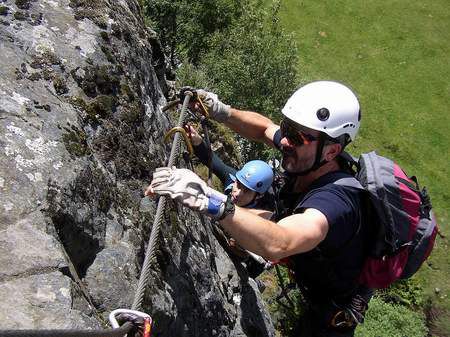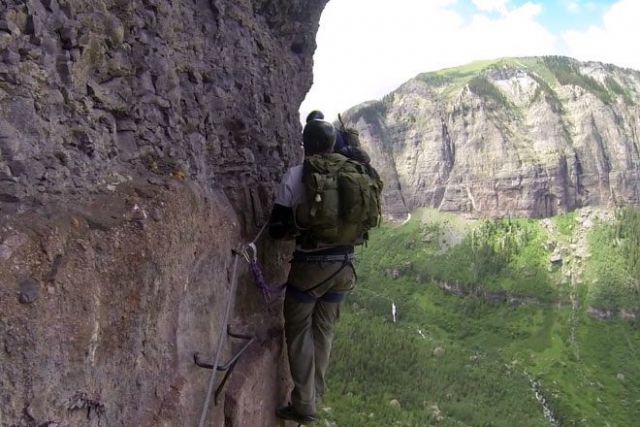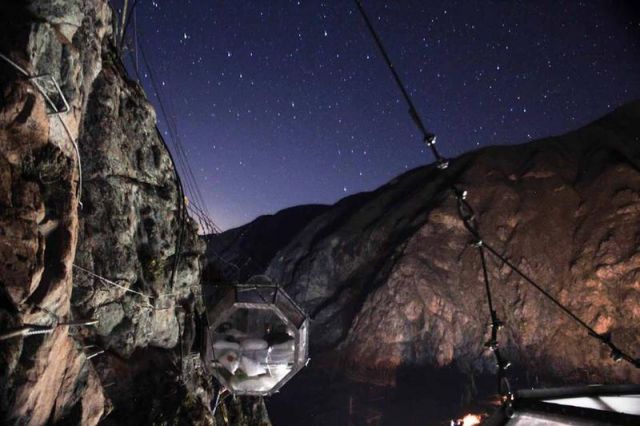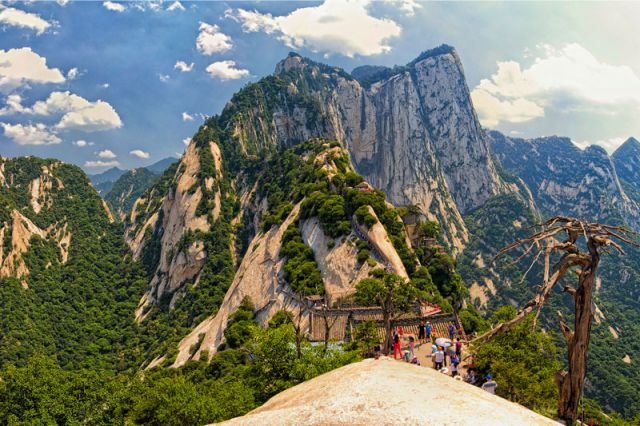What to do when caught in a storm on Via Ferrata ?

There are many proven tips and advice on how to behave in a storm in classic sport climbing, but very few of them deals with the secured routes. In classical climbing, the main principles are well known. Find a safe place at least 2-3 meters away from the wall, sit down, if possible, on a non-conductive object (preferably a backpack) and simply wait. The lightning strike is usually led directly along the wall, so that any shelter in some cranny or under an overhang could become a deadly trap for you. This is a little different on the Via Ferrata. The following article will share with you a few recommendations that emerged from a number of technical discussions and also from our own experience from the middle of Johann Klettersteig (Austria) when caught in an unexpected and very powerful storm.
RULE NUMBER 1 - The weather forecast is NOT always reliable !
Even in case of a perfect weather forecast, pay close attention to the changing weather. Watch approaching clouds and also distant clouds already on the way to a place. Try to ask others. The question on the spot, in the parking lot or in a chalet, costs you nothing and can save much. When you see potential dangers, the best way to avoid troubles in the actual climbing ferrata is not to enter it at all. Here, unfortunately, we often suffer from an excess of courage and motivation. After all, we have come a long way from the city, hard-fought for time, unwilling now to get deterred or give up just because of bad weather. Be sure that a strong storm in the wall will quickly lessen your ego and change your initial courage into a bit different feeling.
RULE NUMBER 2 - You are climbing on a lightning rod !
The basic difference between the classic climbing and climbing secured route is the presence of a long vertical metal wires, ie the actual Via Ferrata ropes. This, during a thunderstorm, changes into one giant lightning rod, from which you need to run away as far as possible. It is definitely not worth to try crawl ferrata back as quickly as possible or just passively wait near it for better weather. Iron objects in the wall directly attract lightnings, so if one strikes somewhere near you, it is almost 100% to your belay ropes.
RULE NUMBER 3 - Watch out for falling rocks !
At least from my own experience I can say that with the actual lightning strike the problem does not end. In our case, it was followed by a smaller rock avalanche, which covered everything that was not well hidden. Falling stones hit an Austrian climber who, while sitting propely on his backpack, has not been able to escape. The lightning miraculously slid in his close proximity, but it was too late to escape the falling stones. Therefore, my advice of survival thunderstorm is to find a well protected place as far away from the iron ropes as possible. With regard to falling rocks, still remind one basic but often little respected rule. If someone yells "watch out" or "stones", do not look up from and where it is falling. You can be hit straight in the face as your helmet becomes useless. Sounds obvious, but the reaction of most people is exactly the opposite.
RULE NUMBER 4 - Watch the other ferrata climbers !
Even before you find a place to hide, try to get an idea of the number and behavior of other climbers on the wall. If there was any unhappiness, you will have enough precious information for rescuers of where, when and how many people were climbing ferrata.
RULE NUMBER 5 - The lightning could damage your Via Ferrata route !
Once the storm passes, consider thoroughly what direction to proceed. Depending on the severity of storms and the place where you are located, you can better complete the journey, or rather choose for descent. Remember that wet rock climbing is much more dangerous than dry, and that any lightning strike could severely damage the ferrata. Again, I go back to our storm at Dachstein, where lightning blasted away some 10 meters of ropes and iron in relatively exposed location. Without a rope and basic belay material you may end up helplessly somewhere near the top.
A FEW WORDS IN CONCLUSION:
Via Ferratas are a great way to look for places that are otherwise accessible only by skilled and experienced climbers. But never forget that you are only here as a visitor and your presumed safety of ferrata can easily turn into a trap from which it is poorly run. Choose just such targets, that suit you both physically and mentally. Do not succumb the opinion that thick iron rope does you no harm. Even a short falls on Via Ferratas can have serious consequences, because unlike the classical elastic rope, which significantly dampens the effects of the fall, the still iron protection will not forgive you anything. Always wear a helmet and certified Ferrata Sets with shock absorber. Start with the simplest and shortest paths, and only later increase their intensity and length. In short, be careful of yourself. And enjoy it!








